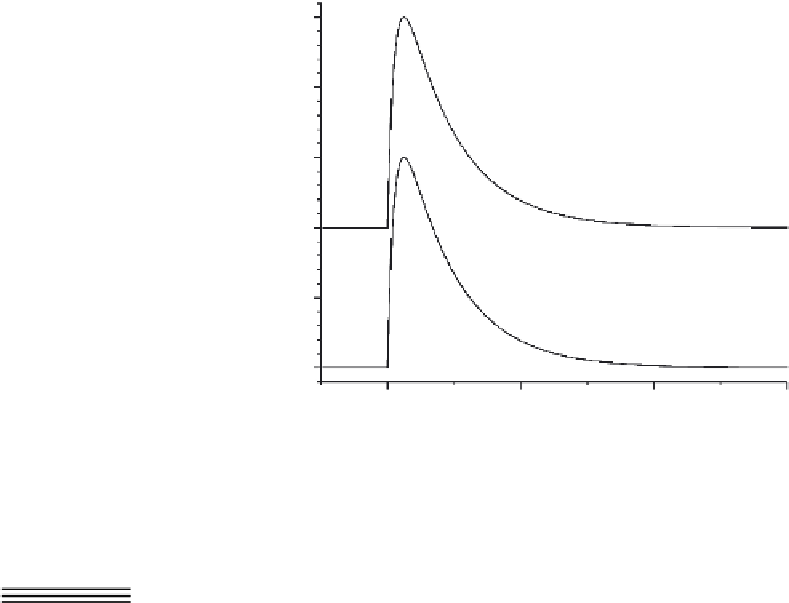Biology Reference
In-Depth Information
2.5
2.0
1.5
F
F
0
1.0
0.5
Δ
F
F
0
0.0
0
10
Time (s)
20
30
Fig. 12
Two conventions, F/F
0
and
D
F/F
0
, for reporting fluorescence changes relative to baseline
fluorescence intensity. Note:
D
F/F
0
¼
F/F
0
1.
VI. Reporting Indicator Fluorescence Intensity Changes
without Calibration
A. Reporting Relative Changes in Fluorescence:
F
0
With the widespread use of nonratiometric indicators, which are di
F
/
F
0
and
D
F
/
Y
cult to
calibrate, it has become common to report not [Ca
2
þ
], but rather indicator fluores-
cence changes. The convention is to report either the fluorescence intensity relative
to baseline intensity (F/F
0
), or the change in fluorescence intensity relative to
baseline intensity (
D
F/F
0
¼
(F
F
0
)/F
0
).
Figure 12
illustrates these two conventions.
From the above definitions and from the graphs in
Fig. 12
, it is apparent that the
two reporting conventions are simply related:
D
F/F
0
¼
F/F
0
1. It is important to
stress that in order for these relative measurements to be meaningful, F and F
0
should be intensities that have been background-subtracted.
B. Caveat in Interpreting Relative Fluorescence Changes: Indicator Fluorescence is Not a
Linear Function of [Ca
2
þ
]
Because a nonratiometric indicator becomes brighter when it binds Ca
2
þ
,an
increase in indicator fluorescence implies an increase in [Ca
2
þ
]. Once fluorescence
intensity data have been converted into relative changes, however, there is perhaps


